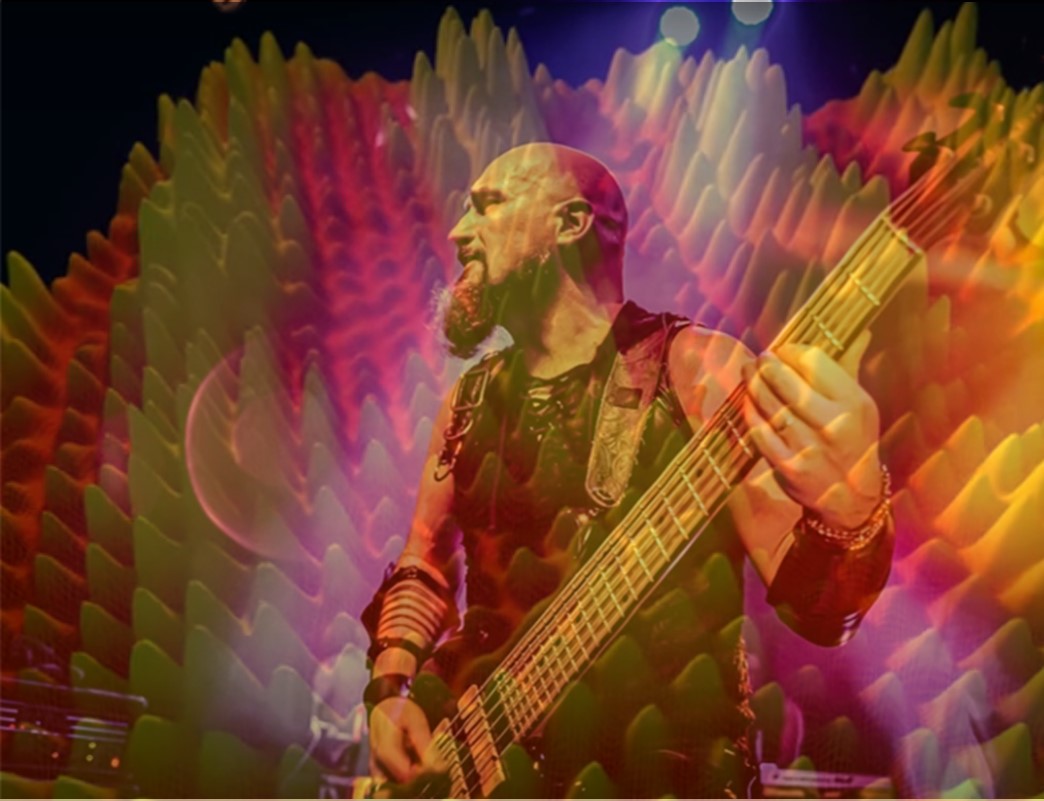|
Is it possible to have one foot in surface science as an experimental physicist and the other playing bass in a heavy-metal band? Welcome to the life of Alessandro Sala! When he is not setting the stage on fire, Sala is “investigating the properties of nanostructured surfaces, 2D materials and organometallic molecules with a scanning tunnelling microscope.” When he is not exploring the intricacies of surfaces, he plays bass for Rhapsody Of Fire, a heavy-metal band “that has sold more than one million records throughout its 25-year history and regularly tours the world.” So, what’s the big deal in playing some music after work? His musical role “requires month-long absences from the lab, early-morning flights and dark leather clothes.” (Wonder if the molecules would act differently if the scientist observing them wore dark leather clothes and carried a bass guitar!) Science and music Writing in Nature, Sala says, “Good time management is key to having the best of both worlds.” If that sounds like a cliché, it is an art he has scientifically perfected over the years. His strategy is to find separate spaces for music and science. “I accept master’s candidates and temporary lecturing positions only if no big tour is scheduled in the following semester. I train my postgraduate students to be completely independent, so they can keep working when I travel.” And he attends conferences only in May, June, September and October; the band tends to tour in the other months. He arranges his parts in new songs mentally over a couple of months and condenses all recording sessions into a couple of weekends. He shares his musical commitments with his co-workers and carefully plans lab activities so that work and music are always in tune. Yes, Sala does attend lab meetings remotely so that he is always updated. No rehearsals while doing lab work, except that “while I’m immersed in an experiment; I do listen to good music, though.” Delightful duet Has one profession had an influence on the other? His colleagues are happy to use his scanning tunnelling microscope during his scheduled absence. Also, “in the lab, everybody is capable of using every instrument, and often we help each other on our scientific projects.” In the music industry, all events from composing new music to live tours are routinely planned around two years ahead. “I treat research branches like albums: every couple of years I revise them critically, and I am not frightened to start a new one, if needed.” “When I come back to my lab after a month of sleeping on a tour bus, my mind is ready for new scientific ideas, and I feel free to dedicate myself to a scientific task within a well-defined time frame.” How does one describe Sala’s life—a symbiotic symphony or a delightful duet? Source: https://www.nature.com/articles/d41586-023-00991-5
Composite image: 1. Alessandro Sala's image by Esther W. Pink from Nature; 2. still of animated image of scanning tunnelling microscope from ArchimedesBerlin.
0 Comments
Leave a Reply. |
AuthorVijayakumar Kotteri Categories
All
Archives
July 2024
|


 RSS Feed
RSS Feed

